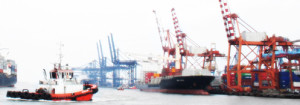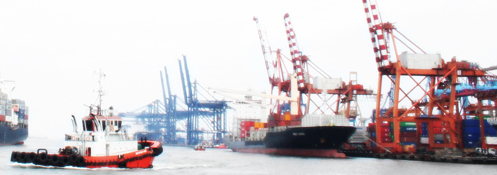
Port congestion is not an exclusive problem of the Philippines. In the same boat are Association of Southeast Asian Nations (ASEAN) member-states Indonesia and Vietnam.
Two of Vietnam’s ports—Cat Lai Port in Ho Chi Minh City and Hai Pong port complex—are facing heavy congestion after an increase in cargo volume and the implementation of a new policy to modernize the country’s customs systems.
According to port operator Saigon Newport, cargo traffic in Cat Lai has spiked 12% for the first quarter of 2014 and is one of the main reasons for the congestion.
The April implementation of the Vietnam Automated Cargo and Port Consolidated System and Vietnam Customs Information System also led to intensified control over overloaded trucks. The development translated to the deployment of new vehicles by transport companies to deliver the same volume, lengthening demurrage and detention time at the port.
Just like the Philippine government’s call for diversion of Manila shipments to underutilized Subic and Batangas ports, Saigon Newport is proposing to the Vietnamese government diversion of traffic to alternative ports such as the two new ports of Ben Nghe and Phu Huu, as well as to upgrade the facilities of Cat Lai port.
The Manila truck ban beginning late February also came at a time when the Philippine Bureau of Customs (BOC) was undergoing massive reform, implementing stricter inspection of inbound cargoes. Other government policies, such as the increased fines on trucks without a franchise, have likewise resulted in fewer haulers servicing the industry, jacking up already high trucking costs due to the truck ban.
Vietnam’s Hai Pong port and local authorities have decided to create a task force to supervise the clearance of cargoes stuck at the port.
Similarly, the Philippines created an executive committee to oversee measures to decongest Manila ports.
At the Port of Tanjung Priok, Indonesia’s main shipping gateway is grappling with congestion and long dwell time of vessels.
Indonesian chief economic minister Chairul Tanjung earlier said the government is taking steps to reduce dwell time at the Jakarta port from 6.2 days to four days by year-end.
Measures include stringent monitoring of unclaimed containers, encouraging 24-hour operations of port stakeholders, implementing an IT-based system for paperwork, and fast tracking all ongoing construction projects at the port.
Indonesian deputy transportation minister Bambang Susantono had been tasked to speed up construction projects at the port, currently in the midst of an expansion.
The Indonesian government will also issue a new rule on overstaying containers and instructed the port operator to reserve parking space for trucks to relieve traffic at Tanjung Priok.
Similar measures are being eyed in the Philippines. For one the BOC, as part of the government committee looking at measures to decongest Manila Ports, said it will intensify its policy against overstaying containers.
Port operators International Container Terminal Services, Inc. and Asian Terminals Inc. have in the first months of the Manila truck ban implementation allotted parking spaces for trucks inside their port premises.
Both the private and government sectors are also encouraging 24-hour operations of port stakeholders. The BOC has, in addition, implemented extended weekday hours and weekend operations at key ports.
About two months into the Manila truck ban’s implementation, containerized cargo volume went down 3.12% to 418,204 twenty-equivalent units compared to the 431,654 TEUs in April 2013, according to latest reports from the Philippine Ports Authority.
Trade Secretary Gregory Domingo has said the disruption in operations of importers and exporters caused by the port congestion will translate to slower growth for the year.
According to a report last June by international maritime media company Seatrade, the port infrastructure in Southeast Asia is “not evenly developed and this will be a problem if the much vaunted ASEAN Economic Community is to come into effect by next year as planned.”
The report cited the Port of Manila and the Port of Tanjung Priok as the two worst affected ports among key ASEAN nations.
Outside of ASEAN, Rotterdam and Hamburg, Europe’s two largest container ports, are also experiencing “significant” congestion along with ports in the US West Coast. – Roumina Pablo





